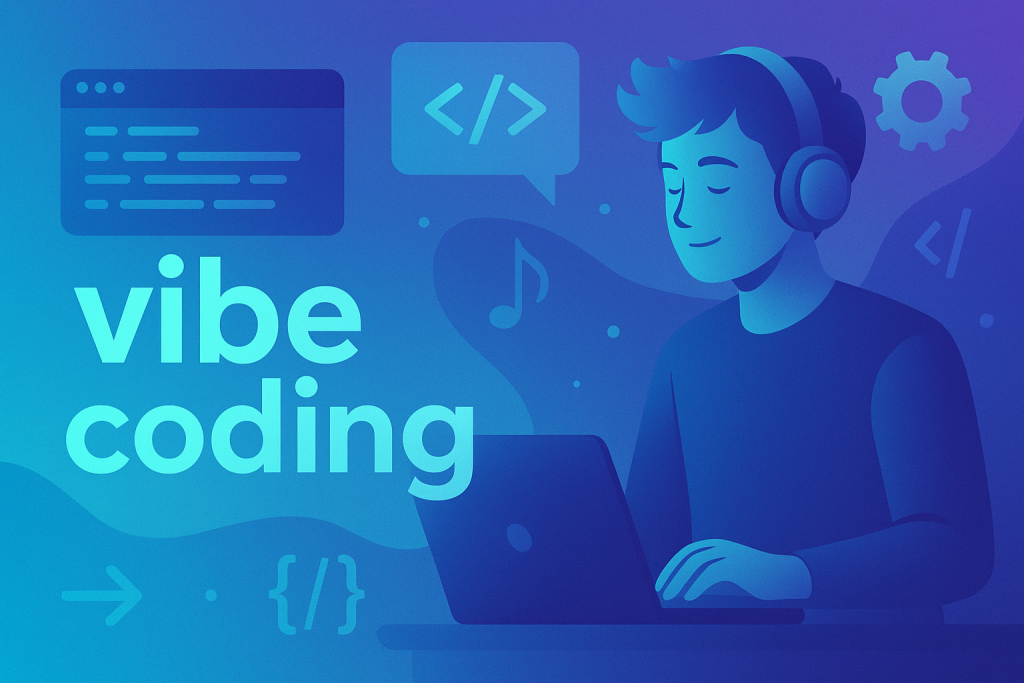
Vibe Coding: Innovation or a Shortcut With Hidden Costs?
Vibe Coding the buzzword shaking the industry is an AI-driven approach that feels less like an incremental improvement and more like a complete shift in how code is written, tested, and shipped. Software development has always moved in cycles of disruption. Each decade introduces a new paradigm that promises to revolutionize how developers build. We’ve seen object-oriented programming change how we structure code, agile transform how teams collaborate, DevOps bridge the gap between coding and deployment, and low-code democratize access.
So, what is Vibe Coding really? At its core, it is an AI-assisted development philosophy where the environment doesn’t just autocomplete your syntax but understands your context. It adapts to your style, predicts your intent, and auto-generates everything from test cases to debugging suggestions. For developers, it feels like coding with a partner that already knows where you’re headed.
This has created what many call a 360-degree transformation
Development feels faster with context-driven suggestions that go beyond boilerplate.
Testing adapts in real time, producing cases aligned to your flow rather than generic templates.
Debugging becomes intuitive, with tools surfacing not just what’s wrong but why it broke in your current workflow.
Collaboration is smoother, with intent-sharing across teams making merges and reviews less painful.
The benefits are obvious. Productivity skyrockets. Launches happen in hours instead of weeks. Junior developers can onboard quickly because the system guides them through gaps. And for businesses, it means reduced costs and faster time to market. On paper, it looks like a dream.
But every revolution has its hidden costs, and with Vibe Coding, the risks are already becoming visible. Over-reliance on AI suggestions means developers may lose touch with fundamentals. Code begins to homogenize as everyone leans into the same predictive patterns, stifling creativity. Worse, AI-driven outputs can be confidently wrong. Logical flaws slipped into production under the assumption that “the tool knows best.”
One of the clearest cautionary tales came from Replit, the popular online coding platform. Initially praised for making coding more accessible with AI-driven features, Replit later became the center of heated debate. Many developers argued that juniors trained exclusively on Replit were struggling when removed from its assistance. They could generate code quickly inside the platform, but when asked to write raw functions, debug complex errors, or think through architecture independently, their skills fell short. What was intended as empowerment became a crutch, and the industry started noticing the gap.
This is the double-edged nature of Vibe Coding. For seasoned developers, it’s a powerful accelerator. For newcomers, it can easily turn into a dependency. And for businesses, while it saves money in the short term, it may create long-term issues if teams lose the grit and problem-solving instincts that come from wrestling with hard problems.
As someone who has lived through several of these shifts, I can say this: Vibe Coding is not going away. The momentum is too strong, and the efficiency gains are undeniable. But we need to be cautious about how we embrace it. Developers must continue practicing fundamentals. Teams must balance automation with human oversight. And leaders must resist the temptation to chase speed at the expense of craftsmanship.
The lesson from Replit is clear. AI-powered coding can be a catalyst, but it can also erode the foundation of the craft if treated as a replacement rather than a partner. Vibe Coding is powerful, but like all revolutions, it demands responsibility. The future of software will be written with it – the question is whether we will control the vibe, or whether the vibe will control us.
Final Thoughts
Vibe Coding is not just another tool in a developer’s kit; it’s a paradigm shift. It promises speed, context-awareness, and smoother workflows, but it also comes with risks we cannot ignore. Over-reliance on AI can erode problem-solving instincts, creativity may flatten under standardized suggestions, and juniors risk growing dependent on systems instead of learning fundamentals.
Like every revolution in software, the impact of Vibe Coding will depend on how we choose to use it. Treated as a partner, it can unlock a new era of productivity and innovation. Treated as a replacement, it may undermine the very craft it aims to elevate.
The future of development will not be written by AI alone – it will be built by developers who strike the right balance between automation and mastery. The vibe is here. Whether it empowers us or controls us will be decided by the choices we make now.



